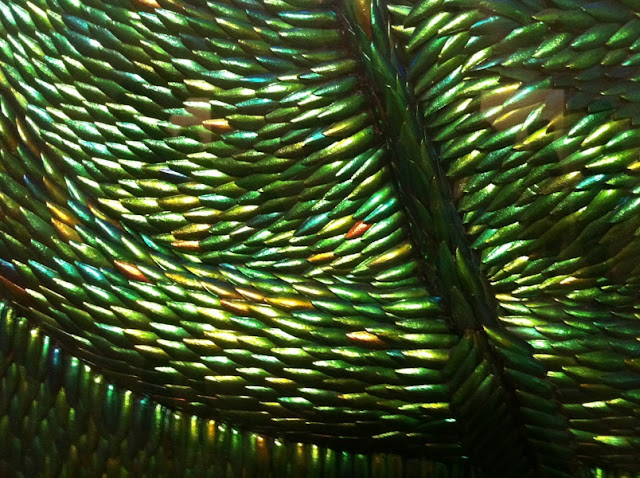This past Friday, November 4
th 2011 witnessed the opening of a new exhibition at 10b Photography Gallery in Rome, with a show called “Solutions”. Hosted by the photo agency NOOR (based in Amsterdam and New York) it comes as an optimistic sequel to its ominous predecessor “Consequences”. Nine superstars of NOOR – Nina Berman, Philip Blenkinsop, Pep Bonet, Alixandra Fazzina, Stanley Greene, Yuri Kozyrev, Kadir van Lohuizen, Jon Lowenstein and Francesco Zizola – come together from every corner of the planet to record the positive steps, however small, that are being made to improve the dire situation in which the majority of our world’s population finds themselves. While there is some range in subject matter, the underlying themes of the exhibition remain climate change and the goal of sustainable development. The photographers demonstrate, using the examples of Iceland, China, Russia, Cuba, Bangladesh, Brazil, the United States, and Kenya both the suffering that the local population is currently undergoing (or has had to bear in the past) and the current attempts made to improve living conditions and slow down the devastating effects of climate change. The exhibition is beautifully diverse, and leaves you with the ambiguous and contradicting feelings of both hope and despair.
Opening with the exquisitely sterile photographs from Iceland, Pep Bonet’s work advertises clean Nordic efficiency in the country’s ability to use its natural geothermal heat for tourism, agriculture, farming and fishing. On the other hand images from the once infamous Bronx slums demonstrate, poignantly, local inhabitants’ incredible will power and eventual success at working together in fighting crime, poverty and pollution to create little oases of green and tranquility. Yuri Kozyrev tears us away to paint a very different picture: one of denial and escapism, as hundreds of Russians (among them teachers, physicists, and other scientists) rebuke the corruption and consumerist of our modern world in favor of simple living in the wilderness of Karelia and Altai. These photos, hauntingly beautiful and sensitive, as all of Kozyrev’s work, are in a way a sorrowful contribution to the show, as they do not in fact offer a solution for change, but rather depict a nation’s preference to abscond, turning back the hands of time, rather than facing the music. Finally, the story told through the stunning and moody photographs of Stanley Greene takes us to Kibera, a grim slum in Kenya’s capital Nairobi. Home to almost 1 million slum dwellers it is the biggest slum in Africa and one of the biggest in the world. According to statistics available, at best only 20% of the area has access to electricity. The battles with crime, unemployment, drugs, alcoholism and rape are daily, and the absence of streetlights at night only increases their number. Greene tackles this problem and follows the lives of several locals who seem to have found a light at the end of their tunnel: solar energy. Not only increasing safety on the streets but also work productivity, the gradual introduction of solar energy to this community is helping, one step at a time, toreach a brighter future.
A powerful show, ‘Solutions’ gives us an insight into some of the most extreme examples of both human suffering and human resourcefulness. What should not be dismissed, however, is the importance of this message in the context of our own lives: only very recently the Italian government was forced to shut down the city center of Milan to vehicles for 10 hours, due to a health violation as the level of pollution had been exceeding the legal EU limit for 12 consecutive days.
‘Solutions’ by NOOR
November 3 – December 16, 2011
10b Photography – Via San Lorenzo da Brindisi 10b – Rome, Italy
November 4th, 2011
10b Photography Gallery





